Mourning doves, ubiquitous across North America, are captivating birds known for their gentle coos and graceful flight. Beyond their aesthetic charm, understanding the intelligence of mourning doves unveils a realm of avian cognition.
While intelligence in birds is nuanced and multifaceted, exploring the adaptive behaviors and cognitive skills of mourning doves offers insights into their survival strategies.
From nesting choices to cooperative parenting and foraging techniques to migratory navigation, these birds navigate a complex world with apparent acumen.
This inquiry into how smart are mourning doves sheds light on the cognitive Dimensions That Contribute To Their Success In Diverse Environments.
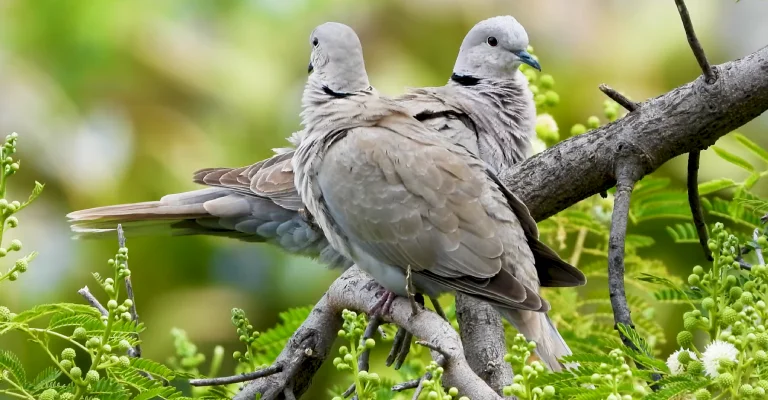
How Smart Are Mourning Doves?
Assigning a numerical value to the intelligence of mourning doves on a scale of 1 to 7 may not be straightforward, as animal intelligence is multifaceted and context-dependent.
However, we can explore various aspects of mourning dove behavior and cognition to provide insights into their intelligence.
Adaptability (6/7)
Mourning doves are highly adaptable birds, thriving in diverse environments ranging from urban areas to rural landscapes. Their ability to adjust to different conditions reflects a level of cognitive flexibility, allowing them to find suitable habitats and food sources.
Foraging Skills (5/7)
Mourning doves primarily feed on seeds, and their foraging behavior demonstrates a certain level of intelligence. They are adept at locating and consuming various seeds on the ground, showcasing problem-solving abilities related to obtaining food.
Communication (4/7)
While mourning doves are not known for complex vocalizations, they exhibit a range of coos and calls that serve communication purposes.
They may convey information about potential threats or establish territory through these vocalizations, indicating a basic form of social intelligence.
Nesting and parenting (6/7)
Mourning doves display remarkable parenting skills. They build simple but effective nests, often in trees or other elevated locations, and share responsibilities in incubating eggs and caring for their young. This cooperative behavior suggests a level of familial intelligence.
Navigation (5/7)
Mourning doves are migratory birds, and their ability to navigate over long distances is impressive. While they may not possess the same navigational precision as some other bird species, their migratory patterns indicate a certain level of spatial intelligence.
Social behavior (3/7)
Mourning doves are generally monogamous and exhibit social behaviors within pairs. However, their social structure is not as complex as that of some other bird species.
Their social intelligence is more focused on mate selection and cooperation in nesting.
Problem Solving (4/7)
Mourning doves demonstrate basic problem-solving skills, especially in the context of obtaining food. They can navigate obstacles and find innovative ways to access seeds, showcasing a level of cognitive adaptability.
Mourning doves exhibit a range of behaviors that suggest a moderate level of avian intelligence. Their adaptability, foraging skills, parenting behavior, and navigational abilities contribute to their overall cognitive abilities.
While they may not rank exceptionally high in all aspects, their survival strategies and social behaviors underscore a respectable level of avian intelligence.
What Are Some Smart Acts Of Doves?
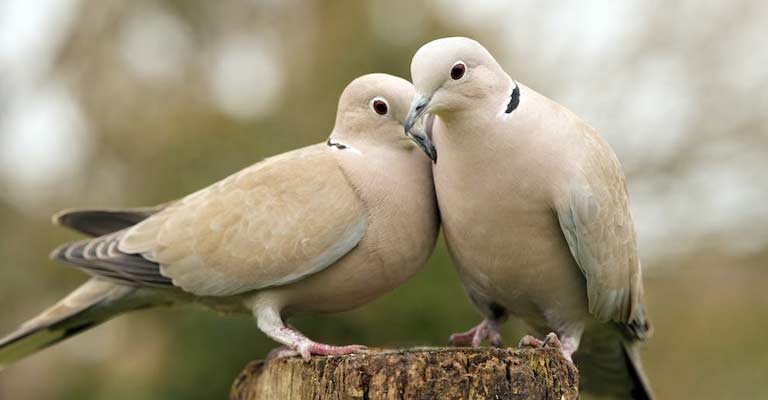
While it’s challenging to quantify intelligence, here are some behaviors or acts that highlight the smart and adaptive nature of doves:
Nesting Site Selection
Mourning doves showcase intelligence in selecting nesting sites. They often choose locations that provide a balance of safety and accessibility, such as trees, ledges, or even human-made structures.
This demonstrates their ability to assess environmental factors for the protection and well-being of their offspring.
Parenting Cooperation
Doves exhibit collaborative parenting. Both male and female doves contribute to incubating the eggs and caring for the chicks.
This shared responsibility not only enhances the chances of offspring survival but also indicates a level of cooperation and communication between mates.
Innovative Foraging
Doves are known for their seed-based diet, and their foraging behavior can be surprisingly inventive. They’ve been observed using various techniques to access seeds, such as flipping them with their beaks or using the ground to crack open tougher seed shells.
Camouflaging Nest
When constructing their nests, mourning doves incorporate materials that blend with their surroundings. This intelligent act of camouflaging helps protect the nest and eggs from potential predators by making them less conspicuous.
The ability to use natural materials strategically highlights a form of environmental awareness.
Distinctive Vocal Communication
While mourning doves may not have an extensive repertoire of calls, they use distinct coos and calls for communication. These vocalizations serve various purposes, such as expressing territorial boundaries, alerting others to potential threats, or signaling during courtship.
Their ability to convey different messages through vocalizations showcases a level of communicative intelligence.
Migratory Navigation
Mourning doves are migratory birds traveling great distances during seasonal migrations. Their ability to navigate across varying landscapes and find specific breeding or wintering grounds demonstrates a sophisticated sense of direction and spatial awareness, contributing to their overall survival.
Territorial Defense
Doves display territorial behaviors to protect their nesting sites and ensure the safety of their young. This involves actively patrolling and defending an area against potential threats, showcasing a level of strategic thinking and awareness of their surroundings.
Mourning doves exhibit a range of intelligent behaviors in their nesting, parenting, foraging, communication, migration, and territorial defense strategies.
These acts underscore their ability to adapt to their environment, solve problems, and collaborate in ways that contribute to their survival and reproductive success.
What Do We Know About Mourning Dove Intelligence?
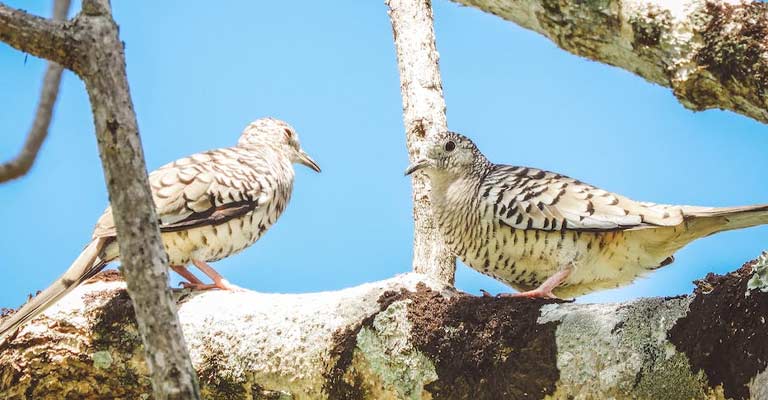
While the intelligence of birds, including mourning doves, is not easily quantifiable in human terms, various behaviors and characteristics offer insights into their cognitive abilities.
Here are some aspects of mourning dove intelligence:
Learning and Adaptation
Mourning doves exhibit a capacity for learning and adaptation, particularly in response to changes in their environment. Whether adjusting to new feeding locations or recognizing potential threats, their ability to adapt suggests a level of cognitive flexibility.
Problem-Solving Skills
Mourning doves demonstrate problem-solving skills, especially when it comes to obtaining food. Their foraging techniques, such as flipping seeds with their beaks or using the ground to crack open shells, indicate a capacity for innovation and problem-solving in the pursuit of sustenance.
Spatial Awareness and Navigation
As migratory birds, mourning doves showcase impressive spatial awareness and navigation abilities.
Their seasonal migrations over long distances suggest an innate sense of direction and the ability to navigate diverse landscapes, showcasing a form of avian intelligence.
Parental Care
The cooperative parenting behavior of mourning doves highlights their intelligence in familial care.
Both male and female doves contribute to incubating eggs and caring for the young, showcasing a level of parental cooperation and responsibility that contributes to the survival of their offspring.
Communication Skills
While mourning doves may not have intricate vocalizations, their coos, and calls serve various communication purposes. These include signaling potential threats, expressing territorial boundaries, and engaging in courtship rituals.
The diversity of their vocalizations indicates a form of communicative intelligence within their social context.
Territorial Defense
Mourning doves exhibit intelligence in territorial defense, actively patrolling and protecting their nesting areas.
This behavior suggests an understanding of the importance of securing a safe space for breeding and raising their young, showcasing strategic thinking in protecting their immediate environment.
Social Structure and Cooperation
Mourning doves display a monogamous social structure, forming long-term pair bonds. The cooperative nature of their pair-bonded relationships and shared responsibilities in nesting and parenting underscores a level of social intelligence and the ability to collaborate for mutual benefit.
Mourning doves exhibit various intelligent behaviors, including learning and adaptation, problem-solving, spatial awareness, parental care, communication skills, territorial defense, and social cooperation.
These traits collectively contribute to their ability to thrive in diverse environments and navigate the challenges of their avian existence.
Which Other Birds Are Smart?
Bird intelligence varies widely across species, with many demonstrating remarkable cognitive abilities. Here are some birds known for their intelligence:
Corvids (Crows, Ravens, Magpies)
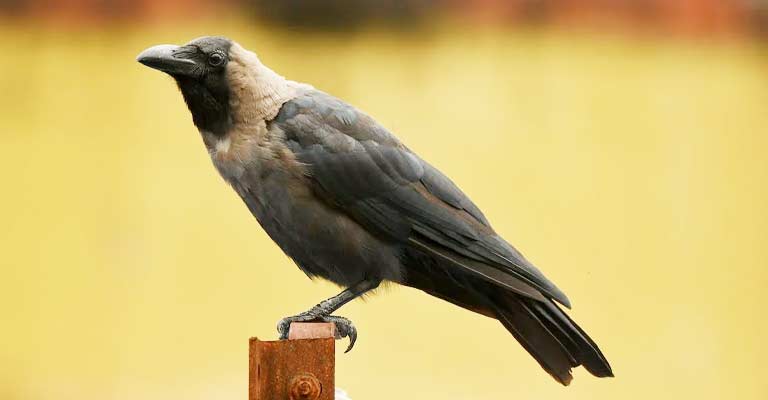
Corvids are renowned for their exceptional intelligence. They exhibit problem-solving skills, tool use, and even the ability to plan for the future.
Crows, for example, have been observed using tools to extract insects from tree bark, showcasing a high level of cognitive flexibility and innovation.
African Grey Parrot
Known for their impressive vocal mimicry and problem-solving abilities, African Grey Parrots are considered one of the most intelligent bird species.
They can learn an extensive vocabulary and use words contextually, displaying a level of communication and understanding that is remarkable among birds.
Kea (Alpine Parrot)
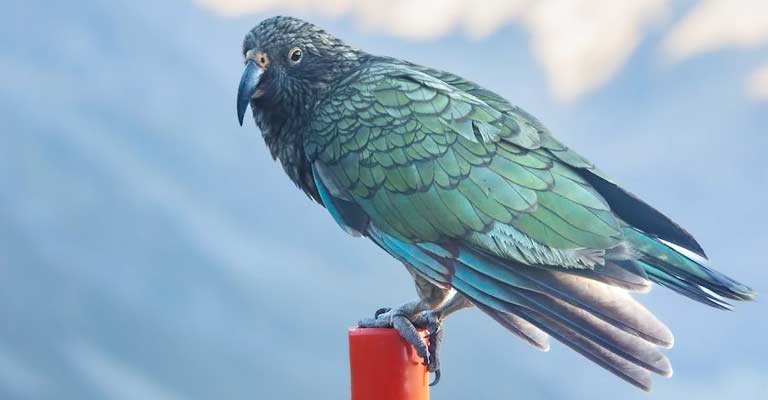
Native to New Zealand, the Kea is known for its playful and inquisitive nature. They have been observed solving complex puzzles to obtain food and using tools to manipulate their environment. The Kea’s problem-solving abilities highlight a high level of intelligence among parrot species.
New Caledonian Crow
This crow species, native to New Caledonia, is celebrated for its advanced tool-making skills. New Caledonian crows can create and use tools to extract insects from tree bark, showcasing a level of problem-solving intelligence that rivals some primates.
Pigeons
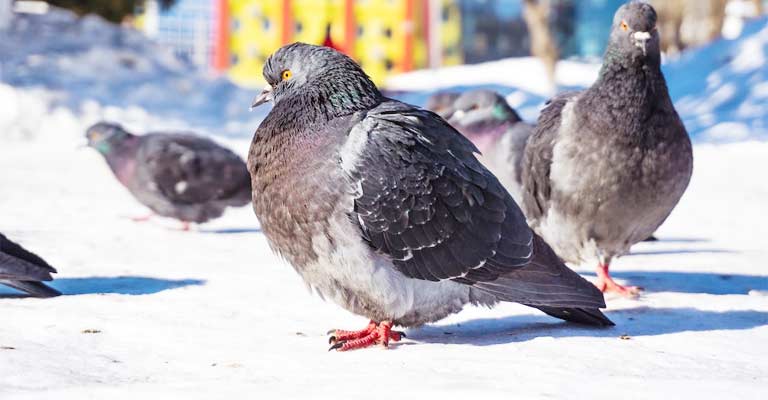
Pigeons, specifically homing pigeons, are well-known for their exceptional navigation skills. They can find their way home over long distances, even when released from unfamiliar locations. Pigeons’ homing abilities suggest a sophisticated understanding of spatial orientation and navigation.
European Robin
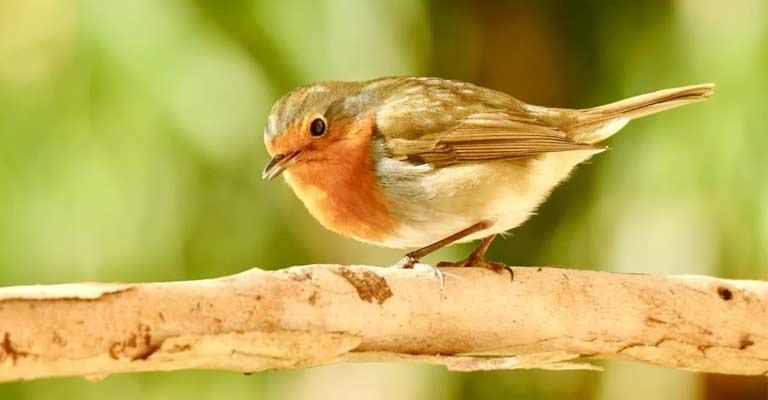
European robins are known for their spatial memory and ability to navigate using a mental map. Studies have shown that these birds can remember the location of hundreds of food caches and retrieve them later, indicating a high level of cognitive mapping and memory.
Tool-Using Goffin’s Cockatoo
Goffin’s Cockatoo, native to Indonesia, has been observed using tools in captivity. These cockatoos can fashion and use sticks to extract food from hard-to-reach places, showcasing problem-solving abilities and tool use in a non-corvid bird species.
These seven bird species demonstrate various forms of intelligence, including problem-solving skills, tool use, advanced communication, spatial memory, and navigation abilities.
The diverse range of cognitive abilities across these birds highlights the complexity and adaptability of avian intelligence.
FAQs
How intelligent are mourning doves compared to other bird species?
Mourning doves demonstrate a moderate level of avian intelligence. While not as renowned as some highly studied species like corvids, they exhibit adaptive behaviors such as nesting site selection, problem-solving in foraging, and collaborative parenting, showcasing a respectable cognitive capacity.
Can mourning doves use tools or solve complex problems?
While not known for tool use, mourning doves exhibit problem-solving skills in obtaining food. Their foraging techniques, such as flipping seeds and using the ground, demonstrate a level of innovation and adaptability in navigating their environment.
Do mourning doves communicate effectively?
Mourning doves have a distinctive repertoire of coos and calls, serving various communication purposes. While not as complex as some bird species, their vocalizations convey messages related to threats, territorial boundaries, and courtship.
Are mourning doves capable of navigating long distances during migration?
Yes, mourning doves are migratory birds and display impressive spatial awareness and navigation abilities during seasonal migrations. Their ability to cover long distances indicates a sophisticated sense of direction and adaptability.
Do mourning doves exhibit social intelligence?
Yes, mourning doves display social intelligence through monogamous pair bonding and cooperative parenting. Both male and female doves contribute to incubating eggs and caring for their young, emphasizing a level of familial cooperation and responsibility.
Conclusion
In unraveling the enigma of mourning dove intelligence, it becomes evident that these birds embody a spectrum of cognitive abilities crucial for their existence.
From the intricacies of nesting site selection to the collaborative efforts in parenting, mourning doves exhibit a commendable level of adaptability and problem-solving.
Their distinctive communication, spatial awareness during migration, and territorial defense strategies further underscore their avian intelligence.
While their intelligence may not rival that of some highly studied bird species, the subtle yet effective ways mourning doves navigate their world reflect a noteworthy level of cognitive prowess.
The story of mourning dove intelligence is a testament to the intricate web of behaviors that contribute to their resilience and success in the avian landscape.